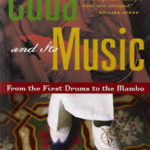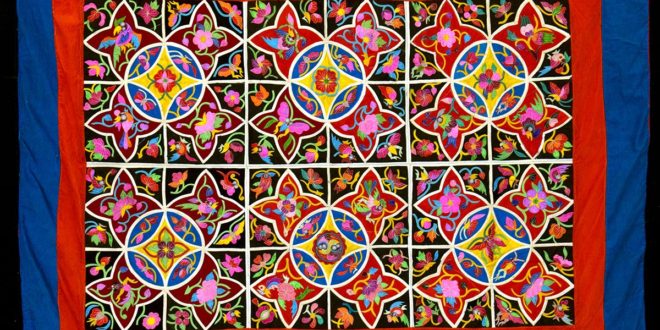Podcast: Play in new window | Download (Duration: 58:04 — 42.3MB)
This is our first show under the Trump Administration and it seems appropriate as we’ve discovered President Trump wants to wall out the world, heighten police powers, and restrict or eliminate altogether arts funding. This is relevant here as The Quilts of Southwest China received some of its funding from the National Endowment for the Humanities which is on the chopping block.
The exhibition was organized by a bi-national consortium of Chinese and American museums, including the Mathers Museum of World Cultures at Indiana University, that has worked together to document and research these textiles–art forms dating back over 3,000 years, but little known outside certain ethnic minority communities in China. Featuring 24 works expertly fashioned, patched, and appliquéd together to form artistic, yet functional textiles, the exhibition presents research and collecting that provides some of the first documentation of the making and use of these textiles.

Lijun Zhang, Research Curator at the Guangxi Museum of Nationalities in Guangxi, China. She holds a PhD in Folklore from Indiana University. She is co-curator of this exhibition and she has edited, along with Marsha MacDowell, an accompanying catalogue highlighting the exhibition.
Timothy Lloyd has served as the executive director of the American Folklore Society since 2001. Before coming to the Society, Lloyd served as executive director of Cityfolk, a non-profit folk arts presenting organization in Dayton, Ohio. Before that he was assistant director of the American Folklife Center at the Library of Congress.
Jason Baird Jackson, Director of the Mathers Museum of World Cultures and Professor of Folklore and Anthropology at Indiana University. He is a folklorist and ethnologist whose teaching and research work bridges the fields of folklore, cultural anthropology, linguistic anthropology, ethnohistory, and museum studies.
RELATED
Intangible Cultural Heritage and Ethnographic Museum Practice
China-US Folklore and Intangible Cultural Heritage Project
Mathers Museum of World Cultures
The Quilts of Southwest China (exhibition at Michigan State University)
Great Heaps of Grain and People (Interchange with anthropologist James Scott)
MUSIC
Highlighting Traditional Instruments
Intro – 巴烏 (bawu)
Break One – 笙 (sheng)
Break Two – 蘆笙 (lusheng)
Outro – 簫 (xiao)
 NEXT UP
NEXT UP
The first of several shows on Cuba–Castro and Che, the Revolution, gangsterismo, and the arts–particularly literature, film and music. We’ll begin with music. We’ll be joined by author Ned Sublette whose book Cuba and Its Music: From the First Drums to the Mambo has been called a major work of the social history of music and a “fascinating story of how music is shaped by economics, politics and culture, and how it becomes a force of its own.” It offers a behind-the-scenes examination of music from a Cuban point of view, unearthing surprising, provocative connections and making a case for Cuba as fundamental to the evolution of music in the New World. Revealed are how the music of black slaves transformed 16th-century Europe and how Cuban music influenced ragtime, jazz, and rhythm and blues.
CREDITS
Producer & Host: Doug Storm
Assistant Producer and Editor: Rob Schoon
Board Engineer: Rob Schoon
Executive Producer: Joe Crawford
 WFHB Bloomington Community Radio
WFHB Bloomington Community Radio


